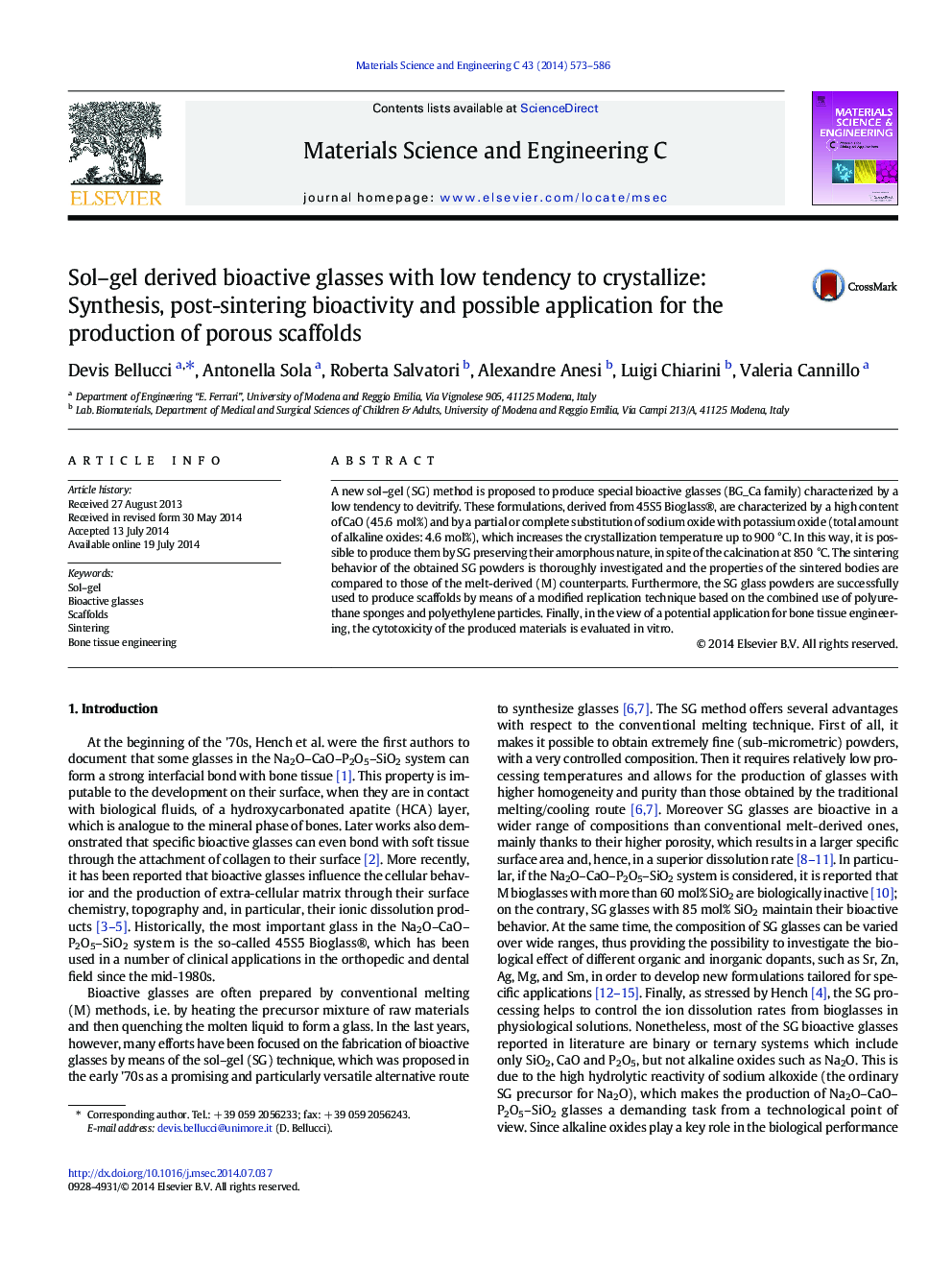| Article ID | Journal | Published Year | Pages | File Type |
|---|---|---|---|---|
| 7869953 | Materials Science and Engineering: C | 2014 | 14 Pages |
Abstract
A new sol-gel (SG) method is proposed to produce special bioactive glasses (BG_Ca family) characterized by a low tendency to devitrify. These formulations, derived from 45S5 Bioglass®, are characterized by a high content of CaO (45.6 mol%) and by a partial or complete substitution of sodium oxide with potassium oxide (total amount of alkaline oxides: 4.6 mol%), which increases the crystallization temperature up to 900 °C. In this way, it is possible to produce them by SG preserving their amorphous nature, in spite of the calcination at 850 °C. The sintering behavior of the obtained SG powders is thoroughly investigated and the properties of the sintered bodies are compared to those of the melt-derived (M) counterparts. Furthermore, the SG glass powders are successfully used to produce scaffolds by means of a modified replication technique based on the combined use of polyurethane sponges and polyethylene particles. Finally, in the view of a potential application for bone tissue engineering, the cytotoxicity of the produced materials is evaluated in vitro.
Related Topics
Physical Sciences and Engineering
Materials Science
Biomaterials
Authors
Devis Bellucci, Antonella Sola, Roberta Salvatori, Alexandre Anesi, Luigi Chiarini, Valeria Cannillo,
